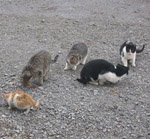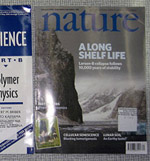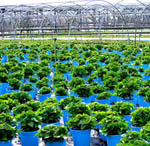Activated carbon helps native plants attain dominance against invasive species
 Invasive,
Invasive,  Plants,
Plants,  Restoration
Restoration  Activated carbon both in powder and block form.A new study from north-central Washington demonstrates the importance of adding activated carbon (e.g. from charcoal) or similar soil amendments to aid the restoration of native plants.
Activated carbon both in powder and block form.A new study from north-central Washington demonstrates the importance of adding activated carbon (e.g. from charcoal) or similar soil amendments to aid the restoration of native plants.
Researcher Andrew Kulmatiski, from the University of Alaska at Anchorage found empirical evidence that activated carbon may suppress the dominance of invasive species by reducing the abundance of certain soil microbes. While soil microbes are important for most plants, non-native species often benefit more from relationships with soil organisms.
The study also found evidence that activated carbon helps native species by neutralizing the toxic chemicals that some invasive plants emit to hinder the growth of neighboring vegetation. Native plants are more likely to be sensitive to these allelochemicals from invasive species given the lack of adaptation from co-evolution.
Kulmatiski looked at plots from former agricultural fields that had been abandoned and dominated by invasive species for as long as 46 years. All the plots had been treated with herbicide to remove the vegetation. A single treatment of activated carbon (1% by mass) had been applied to some plots, which had also been seeded with either native or invasive species.
After six years, the plots with the single activated carbon treatment plus native seed addition reached native plant dominance with a decrease in non-native abundance from approximately 34% to 14% and an increase in native abundance from roughly 10% to 42% compared to its former condition. The treatment had the biggest negative impact on the invasive plants Bromus tectorum and Centaurea diffusa and the biggest positive effect on the native perennial bunchgrass Pseudoroegneria spicata.
Kulmatiski notes, "clearing a weedy field of vegetation and seeding it with native seed was insufficient to restore native dominance, but adding activated carbon to cleared plots and seeding natives allowed native dominance. This suggests that soil manipulation may be an important if not necessary component of native plant restoration."
The study also conducted soil analysis from the plot treated with the activated carbon and found a decreased abundance in certain microbes beneficial specifically to the invasive plants. This provides empirical support that activated carbon "reduced non-native plant growth by decreasing the microbial symbionts associated with non-native success."
--Reviewed by Rob Goldstein
Kulmatiski, A. (2010). Changing Soils to Manage Plant Communities: Activated Carbon as a Restoration Tool in Ex-arable Fields Restoration Ecology DOI: 10.1111/j.1526-100X.2009.00632.x




Reader Comments